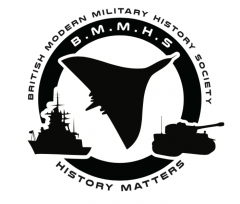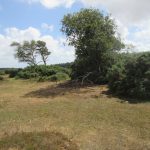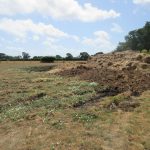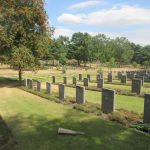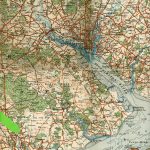Nigel's Corner

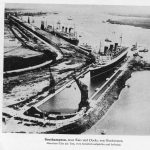

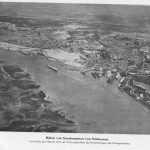
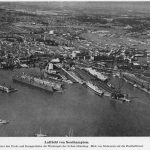
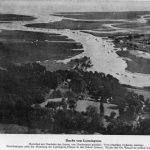


"Target for Tonight"; photographs of the Southampton Docks from a German invasion planning book.
A German Airman’s tale.

Luftwaffe Target for Tonight; Southampton Docks
With the apparent end of “The London Blitz” on the night of 10/11 May 1941; London was subjected to its heaviest night of bombing throughout the war. Also dropping in was Deputy Führer Rudolf Hess at Eaglesham, Scotland in an apparent attempt to seek peace terms with Britain. After this final fling the focus for the Luftwaffe was the planned invasion of the Soviet Union with Operation Barbarossa on 22nd June 1941.
The German bombing of Britain was far from over, although far more sporadic and widespread with the majority of German bomber units having been transferred to the Eastern Front, those bombers that did venture over Britain faced a very much formidable foe with the RAF Night Fighter Force which were able to hone their skills using their AI equipped Beaufighter controlled by well practiced Ground Control Stations.
It was on the night of Monday 7/8th July 1941 that the German Air Force mounted a raid on Southampton Docks using a mixed bunch of bomber units; the raid being led by aircraft of KGr 100 (Kampfgruppe 100), part of the German Pathfinder Force using the X-Verharen navigation system to mark the target for the following bombers. The RAF night-fighter force was fully prepared and claimed to have shot down five of the German bombers and possibly a sixth.
Amongst those aircraft shot down was a Heinkel He 111H-5, werke nummer 3992, 1T+HL of 3/KG 28; a unit that had not seen much action over Britain, the unit specialising in mine-laying around the coast and was based at Nantes / Bougon, France. Piloting the aircraft was Unteroffizier Heinz Weindorf, aged 22, who had spent four years in the Luftwaffe. The aircraft had been picked up by the ground controlled radar (G.C.I. Sopley) as it flew over the English Channel which vectored Flying Officer E Crew onto the enemy aircraft as it approached Southampton with its bomb load of two, 500 kilo bombs.
The bordmechaniker (flight engineer) Unteroffizier Johannes Huppert on the Heinkel , who was manning the rear upper gun was the first to sight the Beaufighter as it closed in, managing to shout a warning over the intercom before he fell dead in a hail of gunfire, the wireless operator (Bordfunker), Obergefrieter Josef Plachenka being badly wounded in the legs. The aircraft was flying at 12,000 feet when the surviving crew immediately started to bale out; the bordfunker (observer ) Obergefrieter Wilhelm Fleschhut exiting first, followed by the pilot and the badly wounded wireless operator from the lower gondola.
The Heinkel went into a flat spin, the tail breaking off on the way down and the aircraft caught fire on hitting the ground at Slade Farm, Boldre, on the edge of the New Forest. The tail was found in woods two weeks later by the local Home Guard Commander who removed the fixed tail gun and added it to his armoury (under his sofa).
F/O Edward Crew wrote in his combat report for the night that he and his radio operator (AI) Sgt N Guthrie were controlled from the ground by G.C.I.Sopley. After several unsuccessful vectors and an A.I. chase, the fighter was put onto a raid going north. Contact was obtained and an A.I. chase ensued, our fighter closing to 600 ft astern and slightly below. A visual was obtained and just as our pilot was about to open fire the enemy aircraft turned left and dived. As it turned the pilot fired and he saw a flash on the starboard side of the fuselage of the aircraft, which took violent evasive action by diving and climbing. It was followed down and round, our pilot still firing and the enemy aircraft finally rolled on its back, got into a flat spin and was eventually seen to blow up on the ground.
Claim: 1 He 111 destroyed.
Of the crew who baled out, the Bordfunker apparently had failed to secure his parachute properly and his body was discovered five weeks later at Haywards Farm some miles from his unopened parachute pack. The pilot, Heinz Weindorf watched as his badly wounded wireless operator floated down on his parachute some distance from him and on reaching the ground, through the heather and gorse of the New Forest made his way to where his comrade lay. Lifting Plachentka onto his shoulders Heinz Wiindorf carried him for over a mile in the darkness to a searchlight battery at Norley Wood where he surrendered and his wireless operator received urgently needed first aid.
Heinz Weindorf after spending a few weeks in a prisoner of war camp in England, he was put on a troop ship bound for Canada and captivity until 1947 when he returned home to Germany. Josef Plachenka was deemed too badly wounded to be able to carry out further military operations so he was repatriated back to Germany at the end of 1941 via Sweden but recovered sufficiently to be able to return to flying operations over the Soviet Union and in 1942 was posted missing.
Heinz Weindorf lived in Germany until his death at the age of 92 but never managed to make the journey to England to visit the graves of his two comrades or visit the site where his aircraft crashed. It was not until July 2018 that Heinz son, Frank managed to achieve his father’s wishes and visit the grave of Wilhelm Fleschhut and Johannes Huppert who now lie in the peaceful and sombre cemetery, the Deutsche Soldatenfriedhof at Cannock Chase, Staffordshire. The following day Frank was able to visit the site on Slade Farm where his father’s aircraft came to earth, along with the site of the searchlight battery at Norley Wood.
The Heinkel was not the only aircraft that F/O Crew and Sgt Guthrie shot down that night, as a little later into the flight, they claimed a Junkers Ju 88 of 3/KG 30 that crashed into the sea with the loss of all the crew.
Six aircraft of the German Air Force failed to return from the operation against Southampton Docks during the night, with four crashing into the sea and one of the pathfinder aircraft from 2/KGr 100 crashing close to Heinz Weindorf’s aircraft at Effords Mill, near Lymington.
F/O Crew ended the war with thirteen enemy aircraft destroyed and twenty-one V 1 flying bombs to his credit. He retired from the RAF with the rank of Air-Vice Marshall in 1973.
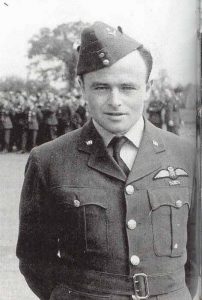
Click to see full BMMHS event listing pages.
Contact us at info@bmmhs.org
Copyright © 2024 bmmhs.org – All Rights Reserved
Images © IWM & NAM
